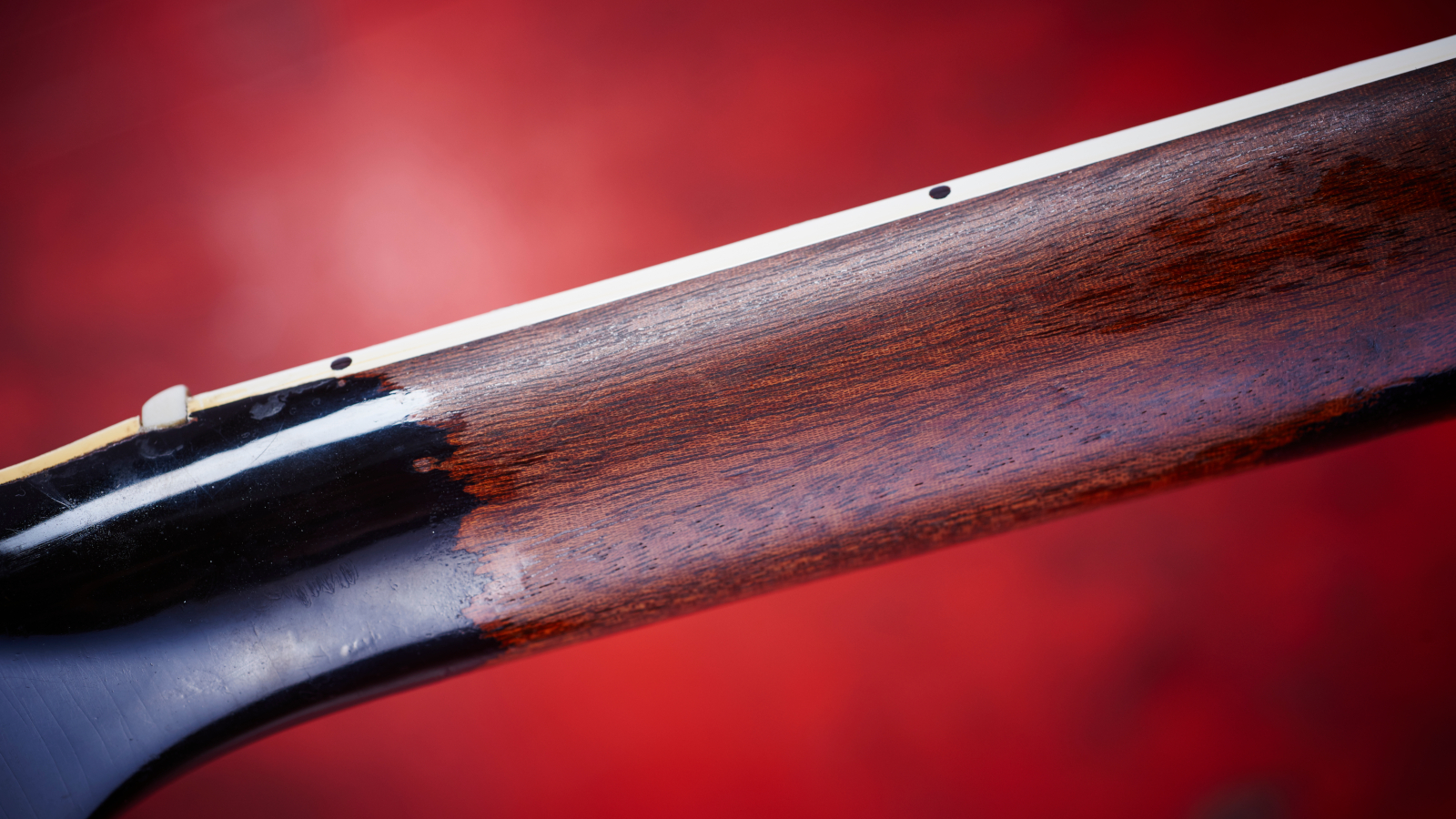Do You Love the Effortless Feel of Worn Vintage Guitar Necks? Here's How to Make Sticky, Tacky Finishes Feel Like Driftwood
These simple solutions can make thick, rubbery guitar neck finishes feel slick, smooth and naturally burnished from years of playing

This is a classic GP column by Gary Brawer, a guitar tech whose clients include Joe Satriani, Metallica and Neal Schon.
A question that comes up often in my shop is how to make a guitar neck feel like raw wood, with none of the sticky, tacky feel that is common on finished necks. What everyone is referring to is the feel of a vintage guitar neck, where most of the finish is worn off and feels smooth and slick.
There is actually still finish on the neck, but it’s thin and burnished from years of playing. Most modern necks have thick finishes and even many of the new lacquer finishes have plasticizers in them to keep them from cracking. The downside to those is that they can feel rubbery and sticky.
So what can you do?
The quickest and easiest solution is to take your neck finish down to a matte or satin feel. The advantage to this is you can usually buff it back out to a gloss finish if you want to go back to a stock look when you sell the guitar. I find it best to tape off the area you want to sand so you have a nice line.
Some abrasives to try include sandpaper – I start with 320 grit and see how that feels. (You can try finer grits between 400 and 1000, but the finer the grit the quicker it buffs out by playing and gets sticky again.) Something I like even better is 3M Scotch-Brite. It also comes in different grits, and I start with gray, red or maroon.

An old luthier trick I like is to use pumice stone powder as an abrasive. It is very fine and leaves a silky finish. One way to use it is to put lemon oil or even 3-in-one oil on a felt pad or cloth, stick some pumice stone to it, then hand-rub the neck with it until you get the feel you are looking for.
All the latest guitar news, interviews, lessons, reviews, deals and more, direct to your inbox!
If you have a finish on your fingerboard, don’t forget to work on that also. If you sand in the direction of the frets you can buff them up while you are at it. Never sand perpendicular to the frets if you can help it. This will keep the string bending smoother.
If you have an unfinished neck or you’ve stripped off a thick finish, here’s something to keep in mind: Although we all love the idea of the feel of raw wood, I do not recommend a completely finish-free neck. It may not be as stable and need more adjusting than usual.
One of my favorite DIY finishes is Birchwood Casey Tru-Oil. It is slow-drying and needs multiple coats but feels great after a final scrubbing with 0000 steel wool or a fine Scotch-Brite or Micro-Mesh.

Another cool, easy-to-use finish is shellac. You can mix your own from flakes or try Bulls Eye Amber Shellac. It can be rubbed on one thin coat at a time with a lint-free cloth until you get a nice smooth finish. If it gets too thick or sticky, try diluting it with denatured alcohol.
To get the final finish, try pumice, rottenstone or steel wool. You can always mix in a little charcoal powder and rub it in for that relic look.
For a more solid finish, try a rub-on polyurethane satin gel like the ones from Rockler. It will leave you with a glossier and sturdier feel.
If you’re curious about these type of finishes but want to do some experimenting first, pick up a piece of maple, sand it out, try some of the methods listed here, and see how they feel.
